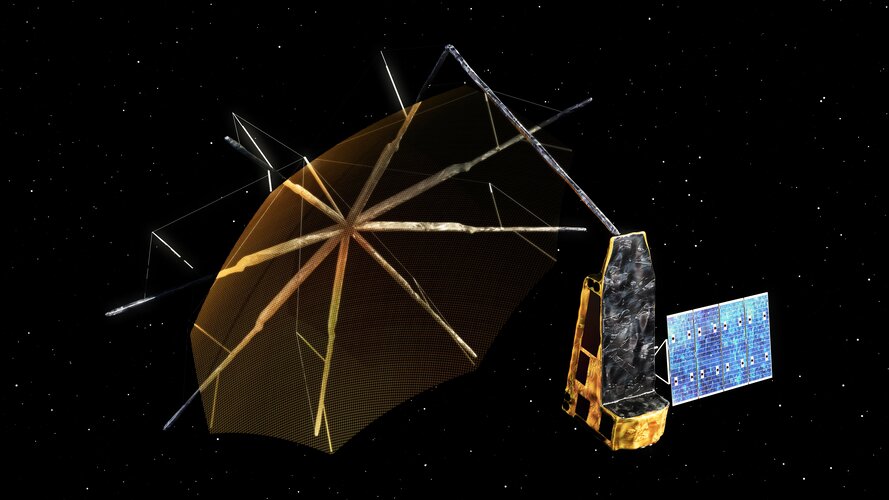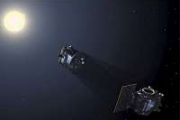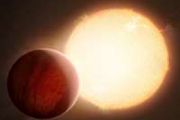
Copernical Team
China growing space capabilities represent 'Pacing Challenge' for US, Pentagon Says
 China and Russia are both developing space capabilities but the difference is the speed with which China is progressing and it represents a "pacing challenge" for the United States, US Space Force Chief of Space Operations Gen. John Raymond said.
"I think they both are developing capabilities for their own use," Raymond said on Wednesday. "I think what's different is that China has gone ve
China and Russia are both developing space capabilities but the difference is the speed with which China is progressing and it represents a "pacing challenge" for the United States, US Space Force Chief of Space Operations Gen. John Raymond said.
"I think they both are developing capabilities for their own use," Raymond said on Wednesday. "I think what's different is that China has gone ve Forecasting performance of a space antenna – before it is built

Antennas are among the most complex systems aboard a satellite – making them demanding to produce and often unpredictable to test. Tiny variables in their building, mounting or operation may impact their working performance in a big way. So ESA teamed up with Danish company TICRA to develop a method of forecasting such discrepancies well before an antenna construction even starts.
UW alum helped pack James Webb telescope for space travel
 A University of Wisconsin-Madison engineering mechanics alumnus made important contributions to NASA's James Webb Space Telescope, which arrived at its home in distant orbit Monday.
The telescope, the world's largest and most powerful space science observatory, launched on Dec. 25, starting its journey toward its destination about 1 million miles from Earth.
Webb is an international
A University of Wisconsin-Madison engineering mechanics alumnus made important contributions to NASA's James Webb Space Telescope, which arrived at its home in distant orbit Monday.
The telescope, the world's largest and most powerful space science observatory, launched on Dec. 25, starting its journey toward its destination about 1 million miles from Earth.
Webb is an international Webb Telescope has reached its destination now what
 Since its launch on Christmas day, astronomers have eagerly followed the complex deployment and unfurling of NASA's James Webb Space Telescope - the largest to ever take to the skies.
Right around the time this article is published, it's expected Webb will have reached a place called the Earth-Sun "second Lagrange point", or "L2". This is a point in space about 1.5 million kilometres away
Since its launch on Christmas day, astronomers have eagerly followed the complex deployment and unfurling of NASA's James Webb Space Telescope - the largest to ever take to the skies.
Right around the time this article is published, it's expected Webb will have reached a place called the Earth-Sun "second Lagrange point", or "L2". This is a point in space about 1.5 million kilometres away UC Berkeley astronomers eager to put new space telescope through its paces
 NASA's latest and snazziest satellite, the James Webb Space Telescope (JWST), launched on Christmas Day, deployed its 21-foot-wide mirror a mere two weeks ago and reached its orbital destination earlier this week. With a flashy new telescope now nearly a reality, astronomers at the University of California, Berkeley, are chomping at the bit to start observing.
After months of anxiety about
NASA's latest and snazziest satellite, the James Webb Space Telescope (JWST), launched on Christmas Day, deployed its 21-foot-wide mirror a mere two weeks ago and reached its orbital destination earlier this week. With a flashy new telescope now nearly a reality, astronomers at the University of California, Berkeley, are chomping at the bit to start observing.
After months of anxiety about A planetary dynamical crime scene at 14 Herculis
 The forensic evidence left in the 14 Her giant planetary system suggests an active dynamical past. Two giant planets, several times more massive than Jupiter, in highly eccentric orbits around a solar-type star were found orbiting at nearly right angles to each other.
In the recently published paper "14 Her: a likely case of planet-planet scattering," Daniella Bardalez Gagliuffi-a senior m
The forensic evidence left in the 14 Her giant planetary system suggests an active dynamical past. Two giant planets, several times more massive than Jupiter, in highly eccentric orbits around a solar-type star were found orbiting at nearly right angles to each other.
In the recently published paper "14 Her: a likely case of planet-planet scattering," Daniella Bardalez Gagliuffi-a senior m SwRI scientist helps confirm liquid water beneath Mars south polar cap
 A Southwest Research Institute scientist measured the properties of ice-brine mixtures as cold as -145 degrees Fahrenheit to help confirm that salty water likely exists between grains of ice or sediment under the ice cap at Mars' south pole. Laboratory measurements conducted by SwRI geophysicist Dr. David Stillman support oddly bright reflections detected by the MARSIS subsurface sounding radar
A Southwest Research Institute scientist measured the properties of ice-brine mixtures as cold as -145 degrees Fahrenheit to help confirm that salty water likely exists between grains of ice or sediment under the ice cap at Mars' south pole. Laboratory measurements conducted by SwRI geophysicist Dr. David Stillman support oddly bright reflections detected by the MARSIS subsurface sounding radar Sols 3367-3368: The Prow to take another bow
 The weekend plan included a short drive (or bump) to get us closer to one of the interesting, more resistant ledges that are exposed in this area ("The Prow"), as Curiosity continues her climb up Mount Sharp. These resistant ledges have caught our attention because they reveal distinct textures. Being able to get close-up, high resolution imaging accompanied by compositional data, will help the
The weekend plan included a short drive (or bump) to get us closer to one of the interesting, more resistant ledges that are exposed in this area ("The Prow"), as Curiosity continues her climb up Mount Sharp. These resistant ledges have caught our attention because they reveal distinct textures. Being able to get close-up, high resolution imaging accompanied by compositional data, will help the New control technique uses solar panels to reach desired Mars orbit
 A satellite on a science mission to Mars aims for a low-altitude orbit, but the lower the orbit, the more propellant is required to enter orbit when arriving from Earth. To save propellant, a technique called aerobraking uses a small propulsive maneuver for orbit insertion to enter a large orbit; the satellite then makes many passes through the upper atmosphere, using drag on the solar panels to
A satellite on a science mission to Mars aims for a low-altitude orbit, but the lower the orbit, the more propellant is required to enter orbit when arriving from Earth. To save propellant, a technique called aerobraking uses a small propulsive maneuver for orbit insertion to enter a large orbit; the satellite then makes many passes through the upper atmosphere, using drag on the solar panels to US undermines safety of Russian cosmonaut's at ISS by denying visa, Roscosmos says
 Refusal of the United States to issue an entry visa for Russian cosmonaut Nikolay Chub, who was to undergo training at the NASA space center, threatens his safety during his stay at the International Space Station (ISS), as well as the safety of his US colleagues, Russia's State Space Corporation Roscosmos said on Saturday.
Earlier in the day, a source told Sputnik that the US did not gran
Refusal of the United States to issue an entry visa for Russian cosmonaut Nikolay Chub, who was to undergo training at the NASA space center, threatens his safety during his stay at the International Space Station (ISS), as well as the safety of his US colleagues, Russia's State Space Corporation Roscosmos said on Saturday.
Earlier in the day, a source told Sputnik that the US did not gran 































